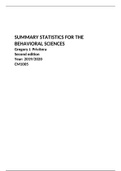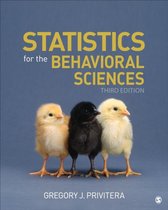Samenvatting
Summary Statistics for the behavioral Sciences (Introduction to statistical analysis CM1005)
- Instelling
- Erasmus Universiteit Rotterdam (EUR)
Summary of the book Statistical for the Behavioral Sciences from Privitera (second edition). Suitable for IBCOM and Premaster students at EUR for the course Introduction to statistical analysis CM1005
[Meer zien]





